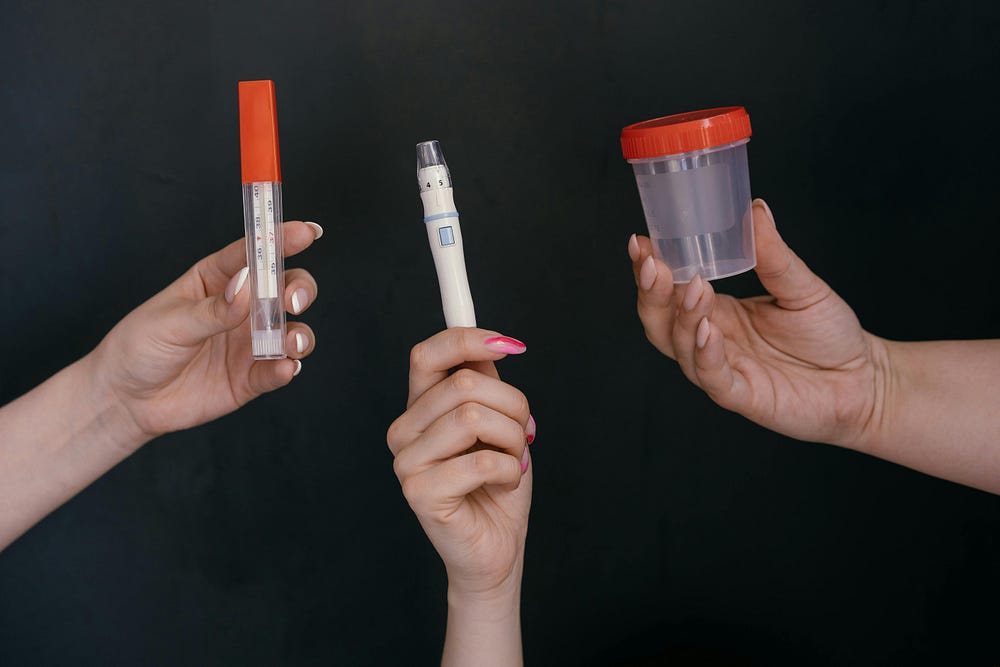A Quick Health Check
The hidden clues in your urine color you shouldn’t ignore.

Did you know that one of the easiest ways to check in on your health is by simply looking at the color of your urine?
It might sound surprising, but your urine is a powerful indicator of what’s going on inside your body. Whether it’s a pale yellow or a deep amber, the color of your urine can give you clues about hydration, diet, and even potential health concerns.
Curious to know what your urine might be telling you? Keep reading to learn how a quick glance could help you understand your health better.
Why Urine Color Matters
Your urine color can reveal a lot about your hydration and health status. Healthy urine should be pale yellow, but if you notice it changing to other colors, it could mean your body is trying to tell you something. While many people don’t give their urine a second thought, learning what’s normal and what’s not can help you stay on top of your well-being.
What factors influence urine color changes?
Several factors can cause shifts in urine color, and understanding them can help you interpret what’s happening in your body:

- Hydration Levels - The most common cause of color variation. Dehydration can darken your urine, while overhydration may make it clear.
- Diet Choices - Foods like beets, carrots, and berries can introduce unexpected colors due to their natural pigments.
- Medications and Supplements - Some vitamins (like B vitamins) or medications can temporarily alter urine color.
- Underlying Health Conditions - Persistent changes, such as cloudy or red urine, might indicate infections or other health concerns that need attention.
Why is monitoring urine color important for kidney health?
Your kidneys play a crucial role in filtering waste and maintaining fluid balance, and your urine is a direct reflection of their performance. Monitoring changes can provide early clues to potential issues:
- Detecting Dehydration - Dark yellow or amber urine can signal your kidneys are working harder due to a lack of hydration.
- Spotting Infections - Cloudy urine may point to a urinary tract infection (UTI), requiring prompt medical attention.
- Flagging Serious Conditions - Persistent red or brown urine could indicate kidney stones, damage, or even issues with liver function.
Understanding Urine Colors: What Each Shade Means

Clear to Light Yellow
- What it means - Light yellow or clear urine is often a sign of good hydration.
- Possible causes - Drinking plenty of water or eating water-rich foods like fruits and vegetables.
- When to take note - If your urine is constantly clear, you might be overhydrating, which can dilute essential electrolytes in your body. Aim for pale yellow rather than completely clear.
Bright Yellow to Neon Yellow
- What it means - Bright or neon yellow can be surprising to see but is usually harmless.
- Possible causes - High levels of B vitamins, especially B2 (riboflavin), found in supplements.
- When to take note - If you’re taking a multivitamin, this bright color may be completely normal. It’s simply the excess vitamins being expelled.
Dark Yellow to Amber
- What it means - Dark yellow or amber urine could signal dehydration.
- Possible causes - Not drinking enough water or consuming dehydrating substances like caffeine or alcohol.
- When to take note - If your urine consistently appears dark yellow, it’s a sign to increase your water intake. Chronic dehydration can stress your kidneys and affect your overall health.
Orange
- What it means - Orange urine can be caused by various factors, from dehydration to certain medications.
- Possible causes - Dehydration, consumption of foods like carrots, or medications like phenazopyridine (a urinary tract analgesic).
- When to take note - If the orange color persists despite drinking more water, consider speaking with your doctor, especially if other symptoms arise.
Pink to Red
- What it means - Pink or red urine can be alarming but doesn’t always indicate a problem.
- Possible causes - Eating foods with red pigments, like beets or blackberries, or, less commonly, the presence of blood.
- When to take note - If you haven’t eaten red foods and notice this color, it’s essential to consult your doctor, as it could be a sign of an infection or kidney issue.
Blue or Green
- What it means - Blue or green urine is unusual and may be due to food dyes or certain medications.
- Possible causes - Consuming foods with artificial dyes, certain medications, or bacterial infections.
- When to take note - If you notice blue or green urine and can’t attribute it to food or medication, contact your healthcare provider to rule out rare metabolic or genetic conditions.
Brown
- What it means - Brown urine can sometimes indicate severe dehydration or issues with liver function.
- Possible causes - Liver or kidney disorders, severe dehydration, or certain medications.
- When to take note - Brown urine warrants immediate attention, especially if accompanied by other symptoms like abdominal pain or yellowing skin.
Cloudy or Foamy
- What it means - Cloudy or foamy urine can sometimes indicate an infection or kidney issues.
- Possible causes - Urinary tract infections (UTIs), kidney problems, or an excessive protein intake.
- When to take note - Persistent foaminess or cloudiness should be evaluated by a healthcare provider, especially if it’s accompanied by discomfort or pain.
Key Takeaways: Staying in Tune with Your Body

Your urine is a natural health indicator that’s easy to monitor. By paying attention to color changes, you can make small adjustments in your daily habits that support your health. Here are a few reminders:
Stay Hydrated
- What to do - Aim for pale yellow urine as a hydration goal. Drink water consistently throughout the day to maintain this balance.
Note Changes
- What to do - If you notice unusual urine colors, think about recent foods, supplements, or medications you’ve consumed.
Consult When Necessary
- What to do - Persistent or unexplained changes in urine color, especially dark or red hues, should prompt a visit to your doctor to rule out underlying issues.
Monitor Frequency
- Why it matters - How often you urinate can also provide health insights. Frequent urination may indicate overhydration, while infrequent urination could signal dehydration or potential urinary issues.
- What to do - Aim for regular urination every 2–4 hours, adjusting water intake based on activity levels and climate.
Be Mindful of Odor
- Why it matters - Strong or unusual odors, like a sweet smell, could signal dietary changes or conditions like diabetes.
- What to do - Track if certain foods (like asparagus) are causing temporary odors, but consult a doctor if unusual smells persist.
Track Medication Effects
- Why it matters - Certain medications and supplements, like antibiotics or vitamin B, can temporarily alter urine color or odor.
- What to do - Review any recent prescriptions or over-the-counter supplements if you notice changes and inform your doctor if side effects seem unusual.
Hydrate Mindfully During Exercise
- Why it matters - Intense physical activity increases water loss through sweat, concentrating your urine and altering its color.
- What to do - Rehydrate with water or electrolyte drinks to maintain hydration during and after exercise.
Understand Seasonal Changes
- Why it matters - Warmer weather or higher altitudes can increase your risk of dehydration, which may darken urine.
- What to do - Drink extra water during hot or dry conditions and monitor urine color for signs of dehydration.
This article serves as a general guide to understanding what your urine color can tell you about your health. Remember, it’s always wise to consult your doctor for personalized advice and conduct your own research on any health changes. Listening to your body’s natural signals can be a simple and effective way to stay in tune with your health.
If you found this article insightful, please leave a comment and share it with others who may benefit from these tips. And don’t forget to follow me for more health insights!
If you’re too busy to read, catch this topic on Vaughn’s Podcast, available on all major platforms.
Want More Health Tips?
Interested in learning more about how your body signals its health status? Check out these related articles:👇
Discover how dietary choices impact gut health and inflammation.
Learn about foods that combat chronic inflammation for better wellness.
And if you’d like regular health updates sent straight to your inbox, subscribe to my email list by clicking the email icon at the bottom of this story.📧
Comments
Post a Comment